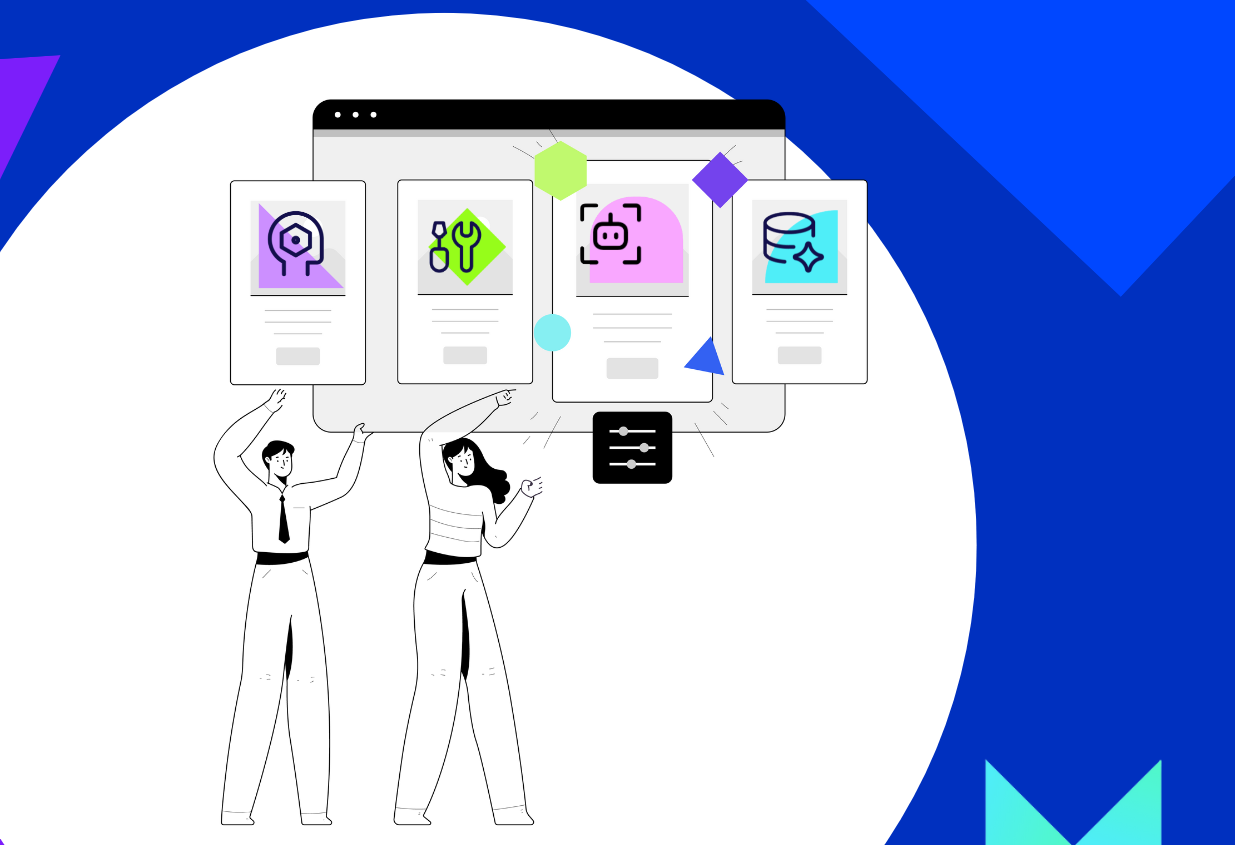How AI Agents Are Re-Engineering Data Processing for Marketing Agencies
.png)
Ask anyone running data operations inside a marketing agency what their team spends the most time on, and you’ll get the same answer: cleaning, reconciling, and validating data…again and again.
The average analyst spends 60–80% of their week preparing data before they ever analyze it. And as client portfolios grow, those manual workflows start to buckle under the weight of complexity. AI agents are transforming these traditional marketing data analysis workflows.
That’s why the most forward-thinking agencies aren’t chasing new dashboards; they’re building autonomous data systems. AI agents for marketing are quietly transforming how data pipelines, validation, and reporting actually get done.
The Hidden Cost of Manual Data Ops
Let’s be honest: most “automation” inside agencies still means a series of brittle scripts and human babysitting.
Here’s an example from a mid-sized performance agency managing 80+ client accounts. Their analysts spent hours each week hunting down duplicates in form submissions, the same contact counted multiple times across Google Ads, Meta, and CRM data. Another agency’s ETL setup was so customized that every new client required re-engineering the entire pipeline from scratch.
These aren’t edge cases; they’re industry norms that highlight common data integration challenges. The result is the same everywhere:
- Inflated lead counts that break trust with clients
- Delays in monthly reporting cycles
- Analysts who feel more like spreadsheet janitors than strategists
This is the pain AI agents are built to eliminate.
What “Autonomy” Actually Means in Data Processing
You can think of an AI agent as a self-governing process that uses learned logic to manage data tasks on its own.
In NinjaCat, agents are trained on an agency’s specific data models and rules. Like how to define a “duplicate,” what a normal CPC range looks like, or how to normalize spend across platforms. Once configured, these agents don’t just execute tasks; they adapt.
For example:
- Deduplication agents detect identical leads submitted within minutes, not days, automatically applying business rules such as 90-day suppression windows or same-day logic.
- Mapping agents align schema structures across platforms, preserving column consistency even when APIs change.
- Anomaly agents monitor live data streams and flag anomalies before reports are published, distinguishing between real issues and seasonal spikes.
The magic isn’t the AI itself; it’s the autonomy. The system learns, refines, and acts without waiting for human intervention, eliminating the need for constant marketing data pipeline maintenance.
Inside the Modern Agency Data Stack
Today’s agency stack is a patchwork of advertising, analytics, and CRM platforms. It’s powerful, but fragile. Every new client adds new data sources, formats, and naming conventions. AI agents are filling the gaps that humans used to patch with manual effort.
1. Intelligent Deduplication & Cleaning
In one case, an agency using NinjaCat’s AI deduplication logic reduced their manual QA time by over 10 hours per week. The agent automatically cross-references multiple identifiers — email, phone, IP address, and timestamp — to find and merge true duplicates. No more over-counted leads or phantom conversions.
2. Adaptive Master Data Architecture
One enterprise-scale agency managing hundreds of KPIs built a single master dataset that their data team maintains inside NinjaCat. Instead of manually writing every mapping rule, they now use AI-assisted workflows to identify schema similarities, suggest unions, and guide data transformations. Humans stay in control, while the AI helps spot inconsistencies, recommend joins, and automate portions of the transformation process. Reporting setup time dropped by 75%, and ETL complexity is no longer a bottleneck.
3. Proactive Data Quality Monitoring
A multi-location media group wanted to “catch errors before clients do.” They deployed anomaly-detection agents inside NinjaCat that continuously validate incoming data streams. When something looks off — a missing ad group, a sudden spend drop — the agent flags it instantly in Slack. This proactive approach follows established data quality best practices.
4. Automated Data Integration & Query Optimization
Instead of manually exporting from Google Ads, Meta, and Bing, AI agents now manage direct warehouse integrations through Snowflake and BigQuery. Proper marketing data warehouse setup is crucial for these automated workflows.They write optimized SQL queries, automate normalization, and keep schema alignment up to date. Reporting workflows that once took days now run in minutes.
The Real Impact: Speed, Scale, and Accuracy
Across dozens of implementations, the data points tell a clear story:
- 10+ hours per week saved on manual QA and cleaning
- 75% reduction in setup time for new client data pipelines
- 60% faster reporting cycles across platforms
But the real value isn’t just in saved hours, it’s in confidence. Following client reporting best practices ensures analysts can focus on optimization, not validation. Ops leaders can scale without constantly hiring. Executives can trust that dashboards are accurate the moment they load.
The Road to Autonomous Data Ops
Agencies don’t flip a switch and become autonomous overnight. The path typically unfolds in three deliberate stages:
Phase 1: Automate the Pain Points
Start where manual work hurts most: deduplication, data validation, and anomaly detection. Deploy AI agents to clean, monitor, and flag data inconsistencies automatically.
Phase 2: Build the Foundation
Consolidate your data into a unified master schema. Use AI mapping agents to maintain standard naming conventions, data types, and dimensions across platforms.
Phase 3: Go Fully Autonomous
Introduce self-healing pipelines. Let AI agents handle version control, API changes, and ongoing quality assurance while analysts focus on higher-order insights.
Most agencies moving through these phases see ROI in under 90 days. The compounding value is what comes after: scale, consistency, and the freedom to focus on strategy, not setup.
The Future of Data Work: From Control to Collaboration
AI agents aren’t replacing data teams; they’re amplifying them. They take on the repetitive, precision-driven tasks that humans shouldn’t have to manage, freeing experts to focus on interpretation and innovation.
At NinjaCat, we’re watching agencies evolve from reactive data maintenance to proactive intelligence. They’re not “using AI.” They’re collaborating with it.
The agencies leading this shift aren’t chasing hype or dashboards. They’re engineering autonomy, one data pipeline at a time.
Interested in what this looks like in practice? See how agencies are deploying NinjaCat AI Agents to unify data, automate QA, and deliver analytics at scale by booking a demo.




.png)
